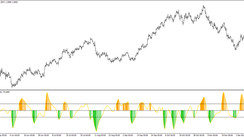During its regular meeting, which ended on October 6, the leadership of the Reserve Bank of New Zealand decided to raise the interest rate (for the first time in 7 years). The rate was raised by 0.25% to 0.5% (which fully coincided with the expectations of economists) to weaken inflation and contain rapidly rising house prices (over the past year, the median house price rose by about 30%, and this growth was one of the strongest in economically developed countries).
Thus, the RBNZ became one of the first largest world central banks (after the central banks of South Korea, Norway, Brazil and Turkey) to take such a step.
The main objectives of the RBNZ are to achieve an annual inflation rate of 2% and full employment in the medium term. The RBNZ also reported that the growth rates of the New Zealand economy and inflation remain quite high (inflation expectations are close to the upper limit of the target range of 1% -3% set by the RBNZ), which creates conditions for further tightening of monetary policy.
Earlier (in August) RBNZ predicted that by the end of 2022 the key rate will rise to 1.6%, and in the second half of 2023 - to 2.0%. The bank will publish new forecasts at the end of November.
And today (at 21:45 GMT) the Bureau of Statistics of New Zealand will publish the latest data on the state of the national labor market. In the 2nd quarter, the unemployment rate in New Zealand fell to 4% and the employment rate increased by +1.0% (versus an increase of +1.0% in the 2nd quarter, +0.6% in the 1st quarter). 2021). The decline in unemployment and the rise in the employment rate are positive for the NZD. Employment growth has a positive impact on consumer spending, which stimulates economic growth, while a decrease in unemployment leads, among other things, to higher wages, also having a positive impact on consumer spending. Domestic consumption and consumer spending in many economically developed countries are one of the most important sources of growth in the country's GDP.
In the third quarter, the number of employed New Zealand citizens is expected to rise, while the employment rate rose another 0.4%, while unemployment fell another 0.1% to 3.9%.
However, if these and other indicators of the Bureau of Statistics NZ report come out with values worse than forecast, it is likely to negatively affect the NZD.
At 22:00 (GMT) the speech of the head of the RBNZ Adrian Orr will begin. If he confirms the bank's propensity to pursue a tighter monetary policy, then the position of the NZD will strengthen in the foreign exchange market. In any case, in the course of Adrian Orr's speech, an increase in volatility in the New Zealand dollar trade is expected.
It is also worth paying attention to the publication after 14:00 (GMT) of the next report of the Global Dairy Trade on the dynamics of prices for dairy products. A similar report released on October 19 indicated a 2.2% rise in the dairy price index, which supported the NZD. A significant portion of New Zealand's exports are dairy products, primarily milk powder. The decline in world prices for dairy products has a negative impact on the NZD, reducing the level of export foreign exchange earnings to the country's budget, while the growth in the indicator is a positive factor and will support the NZD (in the short term).
Another 0.6% rise in the dairy price index is expected, which is also likely to provide short-term support to the New Zealand dollar.
In general, its positive dynamics remains, and the NZD / USD pair remains in the bull market zone, trading above the key support levels 0.6865, 0.7025 (see Technical analysis and trading recommendations).
We also remind that the 2-day meeting of the FRS begins today, which will end on Wednesday with the publication (at 18:00 GMT) of the decision on the interest rate. Probably, the activity of traders on the eve of this important event will gradually decline, but it will rather resemble the calm before the storm.





